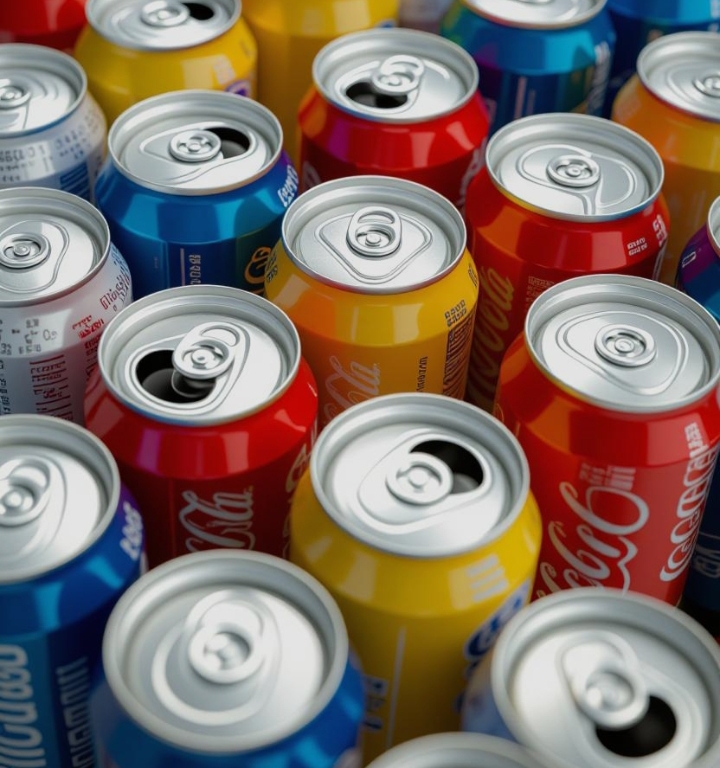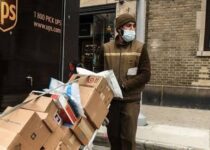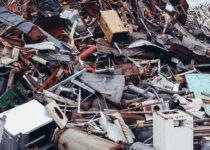Is Polystyrene Recyclable? All You Should Know
Polystyrene, a versatile plastic (often labeled as #6 plastic), comes in two primary forms: expanded polystyrene (EPS, commonly known as Styrofoam) and solid polystyrene (used in items like plastic cutlery, CD cases, or yogurt containers).
While many blogs state that polystyrene is “recyclable but challenging,” the reality is more complex, and the recyclability depends on several factors that are often underexplored.
Is Polystyrene Recyclable?
Yes, polystyrene is recyclable, but it depends on the type and local recycling capabilities.
Expanded polystyrene (EPS), like foam cups or packaging, is recyclable but often not accepted in curbside programs due to its lightweight nature and contamination risks. It typically requires specialized facilities or drop-off centers.
Solid polystyrene, like plastic cutlery or CD cases, is more commonly accepted in curbside recycling, but it’s best to check with your local program, as policies vary.
Always clean polystyrene items before recycling to avoid contamination. If recycling isn’t an option, consider reusing or repurposing where possible.
Polystyrene Recyclable Methods?

Similar with bubble wrap Recycling methods, you should also be aware that recycling polystyrene (PS), whether expanded polystyrene (EPS, like Styrofoam) or solid polystyrene (like plastic cutlery or containers), involves specific methods that vary based on the material’s form and local infrastructure.
1. Mechanical Recycling
Process:
- Collection: Polystyrene is collected via curbside programs (for solid PS) or specialized drop-off centers (for EPS).
- Sorting and Cleaning: Items are sorted to remove contaminants (e.g., food residue, tape). EPS is often washed or inspected to ensure purity.
- Shredding: EPS is shredded into small pieces, while solid PS is ground into flakes.
- Densifying: EPS is compacted using heat or pressure (densifiers) to reduce its volume, as it’s 98% air. This creates dense blocks or ingots.
- Melting and Pelletizing: The shredded or densified PS is melted and formed into pellets, which are sold to manufacturers for new products.
Applications: Recycled polystyrene is used for low-grade products like picture frames, insulation, or non-food packaging due to quality degradation.
Limitations: Contamination (e.g., food residue) and mixed plastics reduce efficiency. The process is energy-intensive, and market demand for recycled PS is low compared to virgin material.
Prevalence: Common in regions with advanced recycling infrastructure (e.g., parts of the U.S., Japan, Europe), but limited globally due to cost.
2. Chemical Recycling
Process:
- Depolymerization: Polystyrene is broken down into its styrene monomer components using heat, solvents, or catalysts.
- Purification: The monomers are purified to remove impurities.
- Repolymerization: Monomers are reprocessed into high-quality polystyrene for new products.
Applications: Produces virgin-quality polystyrene suitable for food-grade containers, unlike mechanical recycling.
Advantages: Overcomes contamination issues and creates higher-value products. Companies like Agilyx and Pyrowave are scaling this technology (e.g., Agilyx’s facilities in Oregon).
Limitations: Energy-intensive and expensive, so it’s not yet widespread. Only a few facilities globally (e.g., in the U.S. and Canada) use this method as of 2025.
Unique Insight: Unlike mechanical recycling, chemical recycling can handle mixed or contaminated PS, making it a promising future solution, though blogs rarely highlight its scalability challenges.
3. Solvent-Based Recycling
Process:
- Dissolving: EPS is dissolved in solvents (e.g., d-limonene, a citrus-based solvent) to create a dense slurry or gel.
- Separation: Contaminants are filtered out, and the solvent is evaporated or reused.
- Solidification: The resulting polystyrene is molded into blocks or pellets for reuse.
Applications: Used for products like coatings, adhesives, or new PS items.
Advantages: Reduces volume without heat, preserving material quality. Environmentally friendlier solvents are being developed.
Limitations: Less common than mechanical recycling, with few facilities (mostly in Europe and Asia) offering this method.
Unique Insight: This method is underreported but gaining traction in regions like Germany, where companies like CreaCycle specialize in solvent-based PS recycling.
4. Thermal Compaction (Densification)
Process:
- Collection and Sorting: EPS is collected and sorted at specialized facilities.
- Compaction: Machines apply heat and pressure to compress EPS into dense blocks (e.g., 50:1 volume reduction).
- Reuse or Sale: Blocks are sold to manufacturers or further processed into pellets via mechanical recycling.
Applications: Often used for construction materials (e.g., lightweight concrete) or low-grade plastic products.
Advantages: Reduces transportation costs due to volume reduction. Widely used at EPS drop-off centers.
Limitations: Requires specialized densifiers, not available in all recycling facilities. Less applicable to solid PS.
Unique Insight: Some municipalities (e.g., Los Angeles) partner with companies like Foam Cycle to deploy densifiers at community recycling events.
Practical Considerations Before Recycling Polystyrene
- Preparation: Clean polystyrene thoroughly to remove food, labels, or tape, as contamination disrupts all methods, especially mechanical recycling.
- Local Infrastructure: Check for nearby EPS drop-off centers (e.g., via Earth911 or Dart Container’s locator). Solid PS may be accepted curbside, but confirm with your local program.
- Mail-Back Programs: Companies like TerraCycle offer polystyrene recycling kits for individuals or businesses, useful where local options are limited.
- Innovative Programs: Some regions (e.g., Japan) use incineration with energy recovery for non-recyclable PS, converting it to energy rather than landfilling, a method rarely discussed in Western-focused blogs.
Frequently Asked Questions?

❓1. Is polystyrene recyclable?
- Technically, yes — polystyrene (plastic #6) can be recycled. However, in practice, it’s rarely accepted in most curbside recycling programs due to contamination, high processing costs, and low market demand for recycled PS.
❓2. Why isn’t polystyrene commonly recycled?
Because:
- It’s cheap to make new, so there’s little incentive to recycle it.
- It’s lightweight and bulky, making it expensive to collect and transport.
- It’s often contaminated with food or liquids, which makes recycling more difficult.
❓3. What’s the difference between regular polystyrene and Styrofoam?
- “Styrofoam” is a brand name for expanded polystyrene foam (EPS), used in cups, packaging peanuts, and takeout containers.
- Regular (rigid) polystyrene is used in items like CD cases or plastic utensils.
- Both are #6 plastics, and both are rarely recycled in standard systems.
❓4. Can I put polystyrene in my curbside recycling bin?
- Usually no. Most local recycling programs do not accept polystyrene, especially EPS foam. Always check your municipality’s recycling guidelines.
❓5. Are there places that recycle polystyrene?
- Yes — some private or specialized facilities accept polystyrene drop-offs, particularly clean, non-food EPS (like packaging foam).
Search for programs like:
- Mail-back recycling (e.g., TerraCycle, Foam Pack)
- Drop-off depots near industrial zones or shipping hubs
❓6. What can recycled polystyrene become?
When it is recycled, it can be turned into:
- Picture frames
- Crown molding
- Insulation panels
- Office supplies (e.g. rulers, trays)
❓7. Is burning polystyrene safe?
- No. Burning polystyrene (intentionally or in landfills/incinerators) can release toxic chemicals like styrene gas and benzene, both of which are harmful to health and the environment.
❓8. Why do some cities ban polystyrene?
Because:
- It’s a major litter and marine pollution problem
- It doesn’t break down in the environment
- It’s not economically viable to recycle Many bans focus on single-use EPS foam food containers.
❓9. What should I do with polystyrene waste?
- Avoid it if possible — choose reusable or compostable alternatives
- Reuse packaging foam for shipping or insulation
- Check for drop-off locations if it’s clean, especially for EPS packaging
- As a last resort, place it in the trash
❓10. Is there a sustainable future for polystyrene?
- Possibly — emerging chemical recycling technologies (like pyrolysis or depolymerization) might one day make polystyrene recycling more feasible. But as of now, reduction and replacement are the most sustainable options.
In Summary: Polystyrene is recyclable through methods like mechanical recycling, chemical recycling, solvent-based recycling, and thermal compaction, but each faces challenges such as limited infrastructure, contamination, and low market demand for recycled material.


